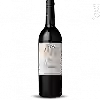
Winery Baron Philippe de RothschildLa Bélière Bio Rosé
In the mouth this pink wine is a with a nice freshness.
This wine generally goes well with vegetarian, appetizers and snacks or lean fish.
Taste structure of the La Bélière Bio Rosé from the Winery Baron Philippe de Rothschild
Light | Bold | |
Dry | Sweet | |
Soft | Acidic |
In the mouth the La Bélière Bio Rosé of Winery Baron Philippe de Rothschild in the region of Pays d'Oc is a with a nice freshness.
Food and wine pairings with La Bélière Bio Rosé
Pairings that work perfectly with La Bélière Bio Rosé
Original food and wine pairings with La Bélière Bio Rosé
The La Bélière Bio Rosé of Winery Baron Philippe de Rothschild matches generally quite well with dishes of pasta, vegetarian or appetizers and snacks such as recipes of lasagna with pointed cabbage, cream and tuna quiche or baked chestnuts.
Details and technical informations about Winery Baron Philippe de Rothschild's La Bélière Bio Rosé.
Discover the grape variety: Cacaboué
Previous
Informations about the Winery Baron Philippe de Rothschild
The Winery Baron Philippe de Rothschild is one of wineries to follow in Pays d'Oc.. It offers 184 wines for sale in the of Pays d'Oc to come and discover on site or to buy online.
The wine region of Pays d'Oc
Pays d'Oc is the PGI for red, white and rosé wines that are produced over a wide area of the southern coast of France. The PGI catchment area corresponds roughly to the Languedoc-roussillon">Languedoc-Roussillon wine region, one of the largest wine regions in France. The area covers all wines that are not produced under the strict laws that govern AOC-level appellations in the regions: among them, Corbières, Minervois and the Languedoc appellation itself. The Pays d'Oc PGI is arguably the most important in France, producing the majority of the country's PGI wines.
The word of the wine: Downy mildew
Disease of the vine due to a fungus. Downy mildew is formidable because it attacks all the organs, from the stem to the grapes, including the leaves, in depth. It was against it that the famous copper and lime-based Bordeaux mixture was developed.














